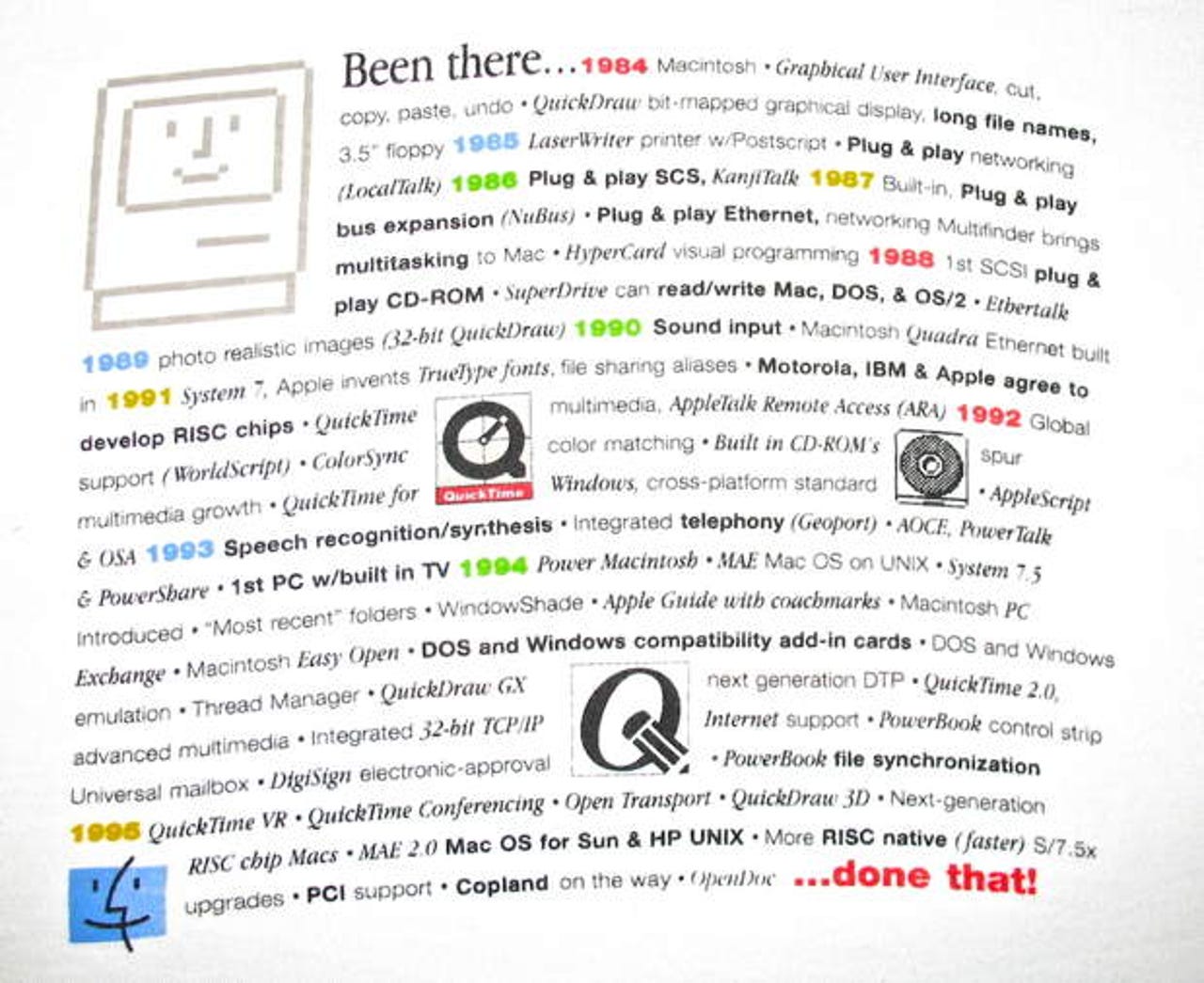The reports of Microsoft's demise are greatly exaggerated

Microsoft is taking a beating from competition from Apple and Google. The company is going downhill fast. Redmond doesn't appear to have a strategy for success and the management to execute on its current plans.
Apple history provides a unique viewpoint over these claims. Believe it or not, but Apple was declared dead for many years. And look at it now.
One problem for Microsoft is reputation. Ages ago, the company owned everything and almost every market. In a recent post on his Storagezilla blog, EMC programmer Mark Twomey said that back in the days Microsoft was a "terrifying competitor." But he added that this was no longer the case.
For the company under attack, it's all about what has been done and the expectation for the future. But Microsoft has had failures of execution for more than a decade. It's catching up to them.
Looking in the back of my closet the other day for a folding chair, I happened upon an Apple t-shirt from 1995, released the weeks before Microsoft's introduction of Windows 95. Apple launched a "Been there ... done that" ad campaign in an attempt to reassure the Mac market, developers and the industry that Apple was hardly fazed by Microsoft's shift to a GUI OS (Windows 95 was the real deal, unlike Window 3 and before).
The Been there... campaign was a timeline of technologies and products showing that the goodness of Windows 95 had long been enjoyed by Mac customers. The meaning was that Apple had innovated with the Macintosh and would keep innovating.

Been there...
1984. Macintosh • Graphical User Interface, cut, copy, paste, undo • Quicktime bit-mapped graphical display, long file names, 3.5" floppy.
1985. LaserWriter printer with PostScript • Plug & play networking (LocalTalk)
1986. Plug & play SCSI, Kanjitalk.
1987. Built-in, plug & play bus expansion (NuBus) • Plug and play Ethernet • networking Multifinder brings multitasking to Mac • HyperCard visual programming.
1988. 1st SCSI plug & play CD-ROM • SuperDrive can read/write Mac, DOS & OS/2 • EtherTalk.
1989. photo-realistic images (32-bit QuickDraw).
1990. Sound input • Macintosh Quadra Ethernet built in.
1991. System 7, Apple invents TrueType fonts, file sharing aliases • Motorola, IBM & Apple agree to develop RISC chips • Quicktime multimedia, AppleTalk Remote Access (ARA).
1992. Global Support (WorldScript) • ColorSync color matching • Built-in CD-ROMs spur multimedia growth • Quicktime for Windows, cross-platform standard • AppleScript & OSA.
1993. Speech Recognition/synthesis • integrated telephony (GeoPort) • AOCE, PowerTalk & PowerShare • 1st PC with built-in TV.
1994. Power Macintosh • MAE Mac OS on UNIX • System 7.5 introduced • "Most recent" folders • WindowShade • Apple Guide with coachmarks • Macintosh PC Exchange • Macintosh Easy Open • DOS and Windows compatibility add-in cards • DOS and Windows emulation • Thread Manager • QuickDraw GX next generation DTP • Quicktime 2.0, advanced multimedia • Integrated 32-bit TCP/IP Internet support • PowerBook control strip • Universal mailbox • DigiSign electronic approval • PowerBook file synchronization.
1995. Quicktime VR • Quicktime conferencing • Open Transport • Quickdraw 3D • Next-generation RISC chip Macs • MAE 2.0 Mac OS for SUN & HP UNIX • More RISC native (faster) S/7.5x upgrades • PCI suport • Copland on the way • OpenDoc
...done that! Macintosh.
As a longtime Mac user, I love this trip down memory lane. The Mac OS of the time was better than Windows 95 (and each generation has continued to be the same story) even though there were detours such as Copland and OpenDoc. But there was no stopping the juggernaut of Windows. And Twomey was right, Microsoft was the "terrifying competitor." Apple's Mac market share declined to just a few percent.
However, today's Microsoft is not Apple in 1995. Almost all the stories about "doom" end up saying that nobody should get hysterical. No kidding.
Microsoft still has a huge market share advantage in desktops and laptops: more than 93 percent. And it has the great majority of file servers sold into the market. By the way, it has a market cap of $233 billion. Yes, it's made mistakes in mobile computing and tablets. And perhaps again with its latest Windows release. But Microsoft isn't going anywhere and its problems may turn around.
Even in the worst of times, Apple knew how to keep its installed base happy: better, more-usable software, ever faster and more-powerful machines, better design and quality.
Perhaps those classic Apple values are places for Microsoft to start.